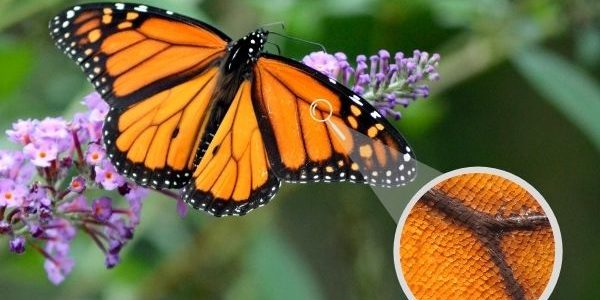Butterflies play an important role in the environment: they help regulate other insect populations, are a food source for many up the food chain, and pollinate plants by spreading their pollen. Here are some interesting facts about these favorite fluttering insects.
- Butterflies wingspans range from 1 to 11 inches
- Most butterflies’ lifespans range from 2 weeks to 2 months, but the migrating monarch lives for much longer, sometimes up to a year.
- Butterflies “puddle” in puddles! They’re sucking up salts and minerals from wet soil. This is why you need a shallow “puddle” in your butterfly garden.
- Butterflies taste with their feet. Using the taste sensors on their feet, butterflies can land on a plant and know if the plant will be a good host plant on which to lay their eggs (meaning it will be a food plant for their plant-eating caterpillar kids after they hatch from eggs). Most adult butterflies, however, are on a liquid diet and use their tube-like mouth, called a proboscis, like a straw to drink nectar.
- Have you ever accidentally touched a butterfly’s wing and had a bit of dust or coloring come off on your finger? Turns out that ‘dust’ is actually thousands of tiny scales from the butterfly wing. The scales are so small we have to use a microscope to see them. While it won’t kill the butterfly if a few of its scales come off, it’s best not to touch butterfly wings. They function as camouflage from predators and protection for the butterflies’ transparent wings, so if too many scales come off at once it can affect their lifespan.
- Butterflies in warmer climates can hatch in about two weeks. In colder climates, may wait to emerge until warmer weather comes around. This hibernation-like state that can happen at any time in a butterfly’s life cycle is called diapause. This is the state in which our butterflies arrive before they are released by donors and members into the Habitat.
- Butterflies have four wings, not two. Though we may draw our best butterfly drawings with 2 wings, there are actually two on the right side and two on the left side of butterflies’ bodies. The wings move in a figure-8 motion to help butterflies take flight.
- Butterflies have many predators including dragonflies, wasps, ants, lizards, frogs, snakes, monkeys, and more. Luckily for our butterflies, we work to secure the screened-in habitat from predators and they can check one of those predators off the list: they definitely don’t have to worry much about monkeys in Kentucky!
Check out a few of our sources for more info:
https://www.uky.edu/hort/butterflies/all-about-butterflies
https://www.si.edu/spotlight/buginfo/butterfly
https://kids.sandiegozoowildlifealliance.org/animals/butterfly
Learn more about the Charlie Miller Butterfly Habitat open through Labor Day here.
Donate to support the Butterfly Habitat, an admission-free nature experience all can enjoy! If you donate monthly or $40+, you’ll get our awesome #SpreadYourWings butterfly sticker created by local artists!
Want more nature news and park happenings? Visit the blog homepage!
